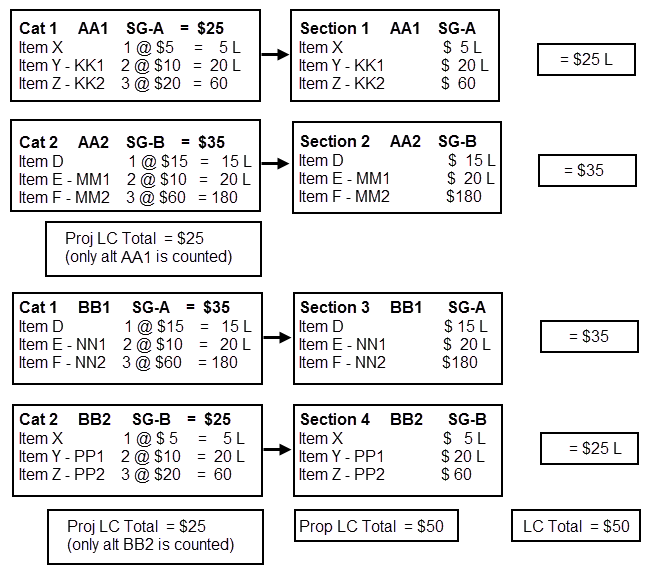Example 2 - A More Complex Scenario
This example uses two projects with alternate categories and alternate items. All set and member values are unique, even though the section group may be the same.
Project 1
Category 1 - Alt Cat Set AA Member 1 Section Group A
Item X
Item Y - Alt Item KK1
Item Z - Alt Item KK2
Category 2 - Alt Cat Set AA Member 2 Section Group B
Item D
Item E - Alt Item MM1
Item F - Alt Item MM2
Project 2
Category 1 - Alt Cat Set BB Member 1 Section Group A
Item D
Item E - Alt Item NN1
Item F - Alt Item NN2
Category 2 - Alt Cat Set BB Member 2 Section Group B
Item X
Item Y - Alt Item PP1
Item Z - Alt Item PP2
This example creates four alternate sections, one for each category alternate set/member. Even though two categories have the same section group, because the alternate set/member is not the same, it creates unique proposal sections. Each category has a unique item alternate set (all members of an alternate item set must reside within a single alternate category).

|
* Each project has a low cost item total of $25 because only the low cost items in the low cost category are counted. |
|
* The proposal low cost total is $50 - $25 from Category 1 in Project 1 and $25 from Category 2 in Project 2. Although the two projects made four proposal sections, each project only contributed one low cost section. |
|
* Both Section group A and B total $60. This is because Section Group A contains proposal sections 1 and 3 and Section Group B contains sections 2 and 4. Section 1 totals $25 and Section 3 (high cost cat alternate) totals $35. |
![]()